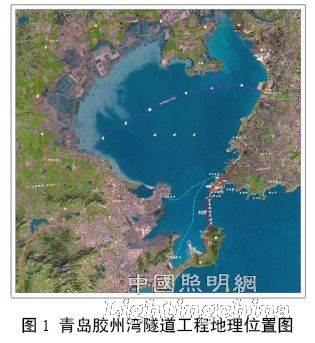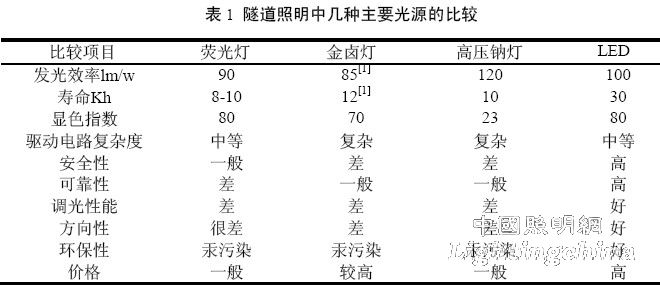1 Project background
Qingdao Jiaozhou Bay Tunnel is an important channel connecting Qingdao's main city and auxiliary city. It is connected to Xuejiadao in Huangdao District in the south and to the island of Qingdao in the north. The total length of the tunnel is about 7120m, of which the tunnel length is 6170m (the seabed section is about 3950m) and the subgrade section is about 950m long. It is a tunnel with urban road function and highway function. It has two-way six lanes and a design speed of 80km/h. The main tunnel has an elliptical section with an internal clearance of 10.391m and a width of 14.426m. There is a service tunnel between the main tunnels on the left and right lines. Qingdao terminal wiring is used in Sichuan Road and Yunnan Road
The off-type tunnel is connected to the north end of the submarine tunnel. The right line is about 1618m long and the left line is about 1659m long. The entire length of the tunnel including the wiring tunnel is 7788m, and the left line is 7797m. In order to facilitate the entry and exit of the vehicles in the Tuandao area, the access roads are set up at Taixi 3rd Road and Tuandao 2nd Road. The maximum water depth in the bay mouth is 42m, the deepest point of the tunnel arch is about 80m from the sea level, the thickness of the main tunnel cover is more than 25m, and the maximum longitudinal slope is 4%.

The basic section of the tunnel lighting source is to choose one of high-pressure sodium lamp, metal halide lamp and LED. After a long period of trial hanging, Fudan University Electric Light Source Research Institute and Qingdao Guoxin Jiaozhou Bay Transportation Co., Ltd. have done a lot of testing work, accumulating A large number of first-hand data, verify the advantages and disadvantages of three kinds of light sources for tunnel lighting from the aspects of effect, energy saving and economy. To select the main illumination source of this Jiaozhou Bay Tunnel.
2 Tunnel lighting status
At present, the light sources used in tunnel lighting mainly include high-pressure sodium lamps, straight tube fluorescent lamps, and metal halide lamps. Among them, high-pressure sodium has high light efficiency, less ultraviolet radiation, can be ignited at any position, is shock-resistant, and has a long service life. It is widely used in tunnels, especially in tunnels outside cities such as mountains, and fluorescent lamps and metal halide lamps have been used in urban tunnels in recent years. A large number of applications are also available in lighting. As the fourth-generation lighting source, LED has been greatly developed in recent years. Its performance indicators such as light efficiency are rapidly increasing and the price is rapidly decreasing. It has broken through the conventional application fields such as display and landscape lighting, in road lighting, tunnel lighting, etc. More and more applications in directional lighting are becoming more and more competitive. Table 1 is a comparison of the same main light sources in tunnel lighting.

Tunnel lighting is a category of directional lighting, where light is expected to illuminate a certain extent on the road and in the surrounding area. High-pressure sodium lamps, metal halide lamps and fluorescent lamps all have a characteristic, that is, the light source illuminator is large, and the light source is 360 degrees in space, so the luminaire efficiency is low, only 60% to 70%, used for directional illumination such as tunnel illumination. The effective light utilization rate is lower, about 40 to 50% [2]. Therefore, although the current luminous efficacy of the LED is only about 100 lm/W, which is lower than that of the high-pressure sodium lamp and the metal halide lamp and the fluorescent lamp, when the directional illumination such as tunnel illumination is used, the luminaire and the high voltage using the LED light source are designed through reasonable luminaire optical design. Sodium, metal halide and fluorescent lamps have higher light utilization. In addition, theoretically derived LED potential light efficiency can reach 350lm / W or even higher, so the development of LED in terms of light efficiency indicators has potential and broad prospects. With the rapid decline of LED prices, compared with traditional light sources, LEDs have the advantages of high efficiency, easy to use, good environmental protection and long life, especially in the field of directional lighting, including tunnel lighting. Quickly promoted. Table 2 shows some of the domestic tunnel engineering projects that use LEDs.

It can be seen that most of the current LED applications in tunnel lighting are in mountain road tunnels, but the Shanghai Yangtze River Tunnel is the first in the world to use LED lighting in urban special long tunnels. As a major member of the Shanghai Yangtze River Tunnel Engineering Semiconductor Lighting Application Group, Fudan University The Institute of Electric Light Sources has done a lot of work in the fields of formulation and testing of relevant technical specifications, accumulated a large amount of first-hand data, and explored a set of LED tunnel lighting evaluation methods, which can provide reference for similar projects.
3 Experimental study on Qingdao Jiaozhou Bay Tunnel Lighting Project
In order to further compare the performance of high-pressure sodium lamps, metal halide lamps and LEDs used in tunnel lighting, the owner of the Institute of Electric Light Sources tested the key performance indicators of the lamps of the three light sources and adopted the objective test for a long time. The method of lighting data testing and subjective on-site evaluation survey comprehensively evaluates the effects of three light sources for tunnel lighting.
3.1 Experimental research method for Qingdao Jiaozhou Bay Tunnel Lighting Project
3.1.1 Key indicators test of tunnel lamp sample lamps
As a product to be put into field application, tunnel luminaires must meet the universal requirements of the application for the luminaire, such as IP rating, light distribution form and basic electrical parameters. Taking into account the importance of the Qingdao Jiaozhou Bay Tunnel Project, the Institute of Electric Light Sources of Fudan University, the research unit, undertakes the testing of the light and electricity parts of the lamps sent by the manufacturers.
After conducting the light and electric sub-tests on the sample lamps sent by the manufacturers, the research team evaluated the overall lighting plan submitted by the manufacturer. The evaluation process is to establish a room space model inside the tunnel in the lighting design simulation software. According to the previous test results, the lamp/light source library is built, and the light is traced according to the scheme provided by the manufacturer to obtain the final simulated lighting effect in the tunnel. This kind of assessment is aimed at evaluating the products of each participating unit from a holistic perspective, mainly assessing energy-saving indicators and lighting effects.